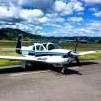-
Posts
5,777 -
Joined
-
Last visited
-
Days Won
28

Ragsf15e replied to gwav8or's topic in Vintage Mooneys (pre-J models)

Ragsf15e replied to Modify201's topic in Avionics/Panel Discussion

Ragsf15e replied to N177MC's topic in Vintage Mooneys (pre-J models)

Ragsf15e replied to AndreiC's topic in Vintage Mooneys (pre-J models)

Ragsf15e replied to AndreiC's topic in Vintage Mooneys (pre-J models)

Ragsf15e replied to Rick Junkin's topic in Modern Mooney Discussion

Ragsf15e replied to Stand_Tall's topic in Vintage Mooneys (pre-J models)

Ragsf15e replied to Stand_Tall's topic in Vintage Mooneys (pre-J models)
We have placed cookies on your device to help make this website better. You can adjust your cookie settings, otherwise we'll assume you're okay to continue.